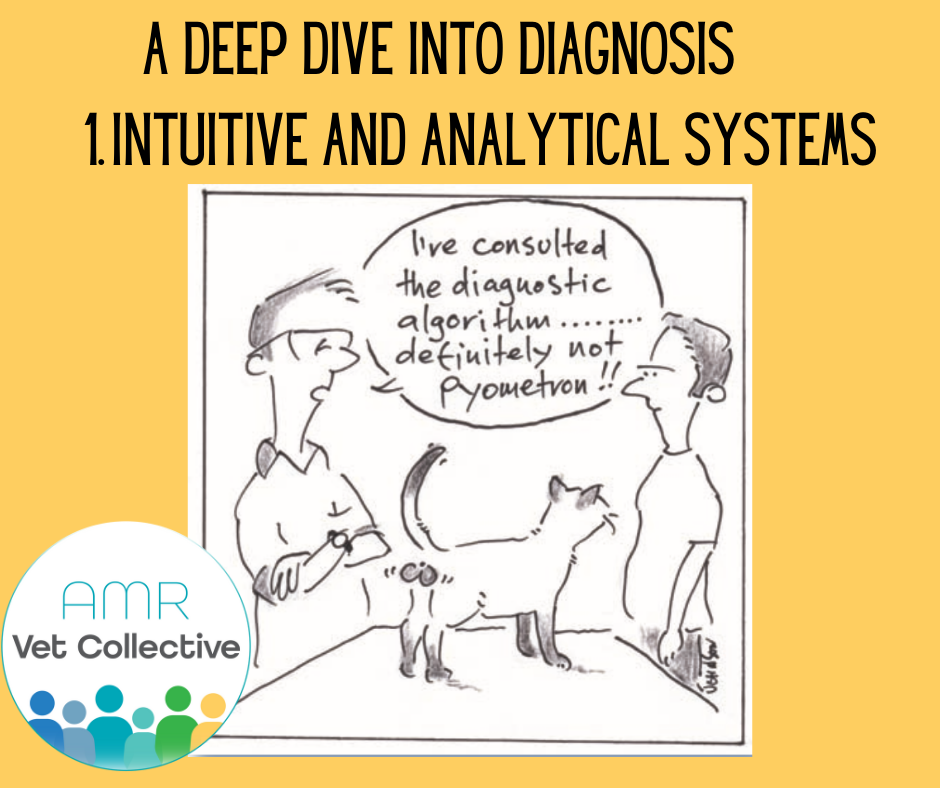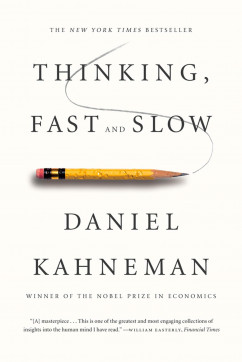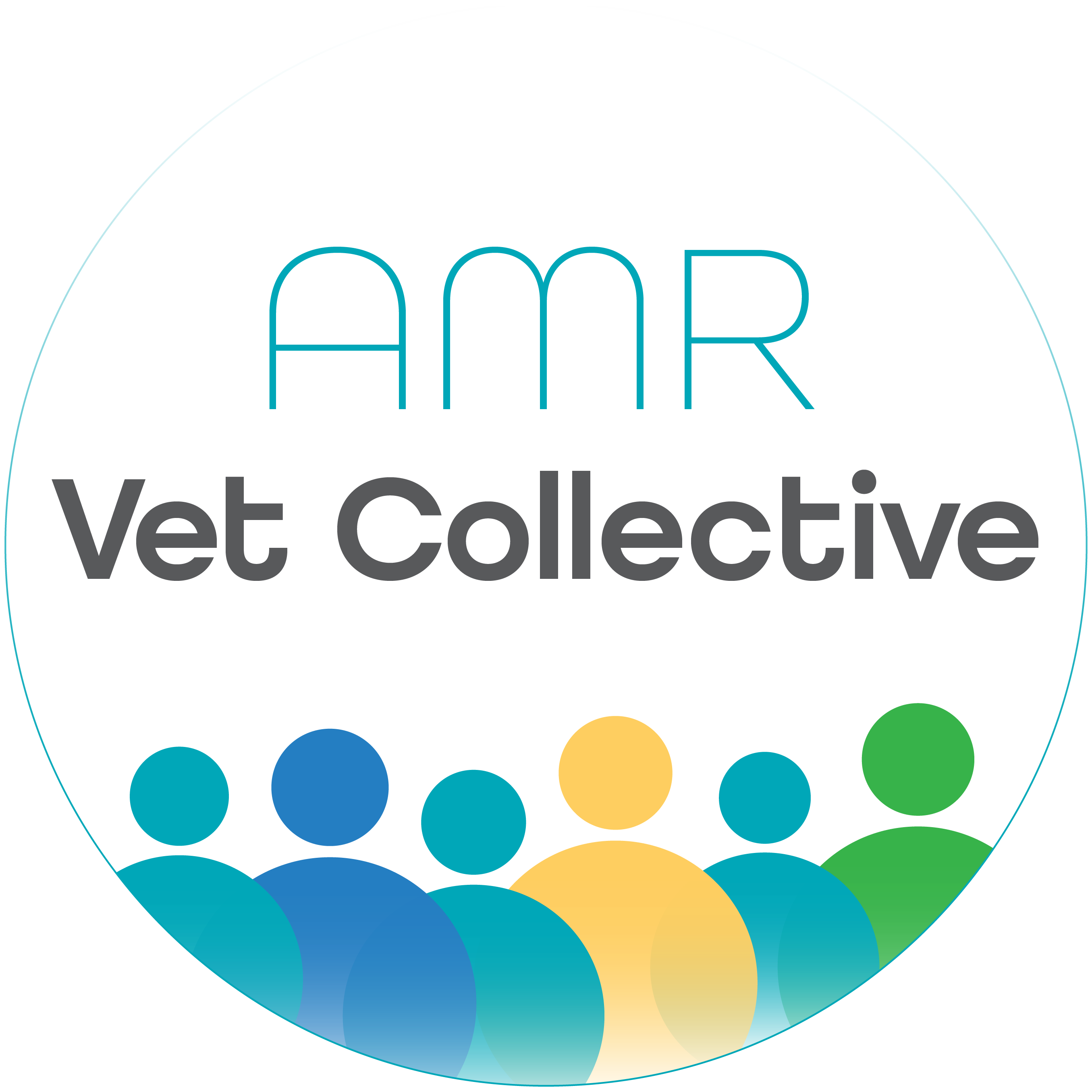Diagnosis is hard!
2022-03-22A deep dive into how we think through diagnoses - starting with the difference between System 1 (intuitive) and System 2 (analytical) thinking

In a series of three papers published just over 5 years ago our colleagues Canfield, Whitehead, Johnson, O’Brien and Malik (at least one name in there will be familiar to most Australian vets!) discussed case-based clinical reasoning. This series was specifically related to feline medicine, but the lessons can (and should!) be applied to all species.
We recommend reading the papers if you can get your hands on them, and in the next two blog posts we will take a deep dive into the concepts presented in these papers.
[links to papers are:
https://doi.org/10.1177/1098612X15623116
https://doi.org/10.1177/1098612X16631233
https://doi.org/10.1177/1098612X16643251]
Paper 1 https://doi.org/10.1177/1098612X15623116 is about analytical and intuitive systems. It introduces us to System 1 (immediate and unconscious; think pattern recognition) and System 2 (effortful and analytical; think evidence-based veterinary medicine [EBVM]) thinking.
Spoiler alert: this paper recommends a combination of both System 1 and System 2 thinking, where both intuition and analytical effort are used together to result in effective clinical reasoning.
The distinction between System 1 and 2 thinking was made popular in a 2011 book ‘Thinking, Fast and Slow’, by Daniel Kahneman, a behavioural economist. It has been applied very effectively to diagnostic process and helps to explain the optimal way to think through clinical cases.

Canfield and colleagues (2015) identify that Systems 1 and 2 share a common diagnostic starting point (i.e. the presentation of an accepted presentation or illness) but then diverge in the way they form hypotheses about the disease, with one (System 2) requiring more effort than the other. Both systems are susceptible to bias, which may lead to cognitive error (more on this in the next article…), although when used correctly, System 2 thinking will diminish the risk of error through application of explicit objective reasoning.
While System 2 thinking does take more effort to enact, it results in a greater accumulation of information and understanding for the clinician compared with a reliance on System 1 thinking. This is very important for junior clinicians, and it is also good to know that once System 2 thinking has been enacted, the stored case information becomes accessible through a System 1 mechanism the next time a similar problem is encountered (my mum, a great diagnostician herself, used to call this ‘the pegs that we hang information on’).
So, can we and should we use System 1 and 2 thinking together?
Canfield and colleagues report that “it is suggested that fewer mistakes are made in medical diagnosis when both forms of diagnostic reasoning are combined and utilised in interpreting data.” – so it sounds like it is a good idea.
But how do we do it?
While we all come with a background of favouring one type of thinking over the other, it seems that we can train ourselves to use both in a way that is effective and that diminishes the flaws that might be associated with the use of one form exclusively.
Importantly, trust should be placed in System 1 thinking (this may be hard for those who favour System 2!), but awareness of where it is likely to let you down and where System 2 processes need to be used to augment your reasoning is essential.
Backing up initial presumptions with appropriate testing and application of best evidence results in the best of both worlds.
An important caveat to note is that the effect of experience and expertise is important to consider when looking to improve diagnostic acumen. As experience increases so do the number and quality of “illness scripts” that can be called on for System 1 thinking. Consequently, the use of System 1 thinking, backed up by System 2 processes where necessary is most valuable when enacted by expert clinicians. Conversely, where System 1 thinking is poorly developed (i.e. in those with less exposure to complex clinical scenarios and experiences; or where confidence outweighs experience), System 2 processes are best to be relied on until multiple complex illness scripts are developed that can be used to support System 1 thinking for similar future presentations.
So, the next time you work through a case, consider how you are relying on System 1 and System 2 thought processes…
Do you need to challenge how you think for future cases?
Are you able to describe your thinking?
Does your pattern of thinking align with your experience and knowledge base?
In our next blog we will look at sources of error that might creep in and what you can do to recognise them and minimise their effect…
